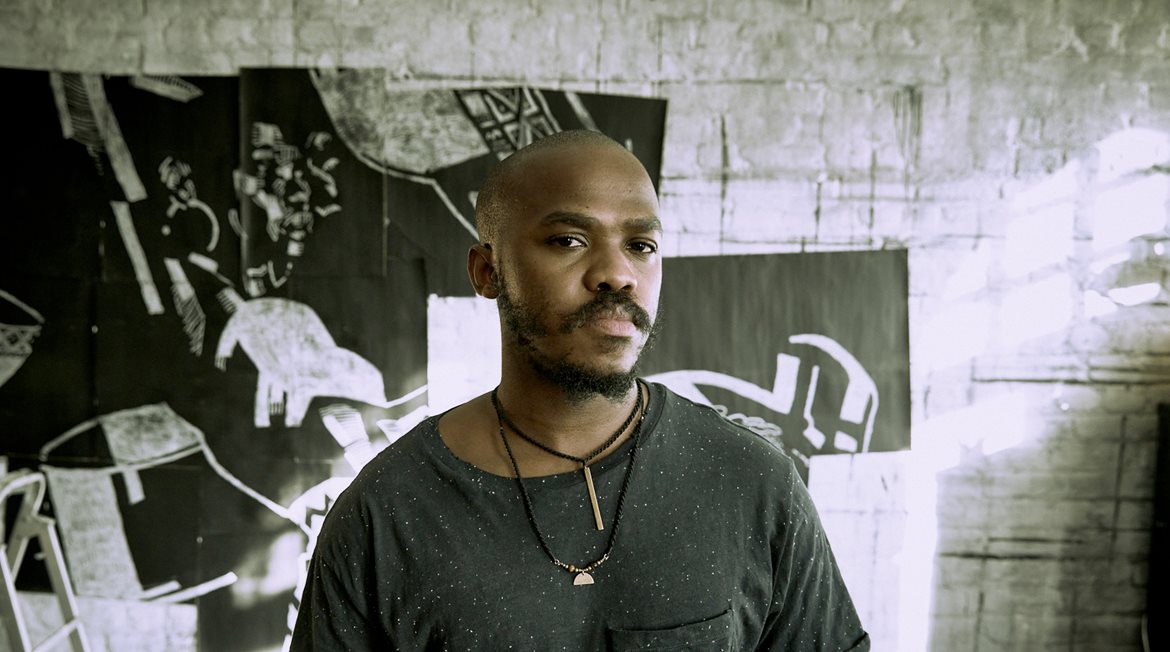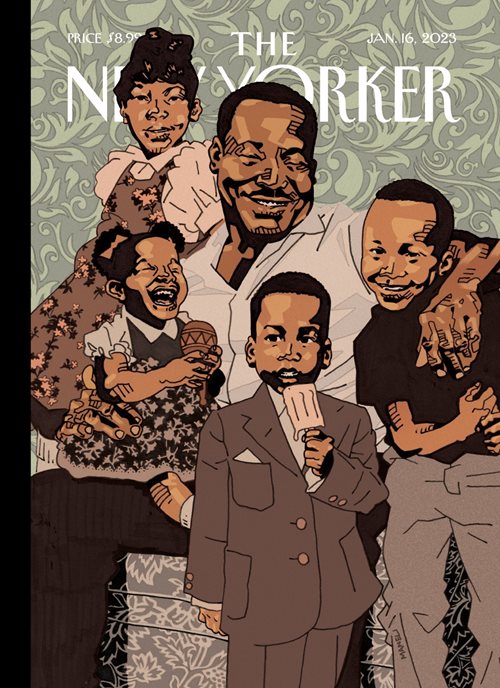
Maneli, 33, who graduated with his MA Fine Art from Nelson Mandela University in 2020, says the experience has been “wild, wild, wild”.
The buzz started when the New Yorker magazine commissioned him for its annual Martin Luther King edition cover in January 2023.
The United States honours the life of the late civil rights activist on 16 January every year as Dr Martin Luther King Day.
 Pola Maneli’s illustration of Dr Martin Luther King for The New Yorker magazine
Pola Maneli’s illustration of Dr Martin Luther King for The New Yorker magazine
The magazine asked Maneli to design its coveted cover slot after having previously used his illustration skills.
“I got a random email from the New Yorker for an illustration for a piece in the wake of the killing of George Floyd in 2020 in the US,” the Eastern Cape artist says of his first encounter with the Manhattan weekly publication.
“After I finished, I asked them, ‘how did you come across my work?’. It turned out that one of the pieces I had done as an editorial illustration exercise for my degree at Nelson Mandela University caught their eye on my Instagram feed.”
Thrilled with the opportunity, he knew he had to bring his A-game.
“I just made sure that that entire process was professional, managing my time and my deadlines,” he says. “As important as it is for the work to be good, people have to know that they can rely on you.”
Then, after publication of the King cover, the magazine relayed that Spike Lee – who directed films such Malcom X, Do the Right Thing and BlacKkKlansman – wanted to get in touch.
“Spike Lee was a close friend to the King family, and he has a direct line of communication to them. He called me, which was a wild, wild experience,” says Maneli.
“We had a chat about the work, and spoke a little bit about how I felt. I've always thought that his work has a similar kind of thinking or approach to it, he tries to make art about something he cares about.
“And then he told me that he'd like to purchase the original drawing of the cover.”
Another “unbelievable moment”, he says, was hearing that Lee had put his illustration into an art exhibition about his creative influences at Brooklyn Museum.
Maneli often delves into social issues in his art but chose to portray King in a personal context, surrounded by his children.
He explains how this links back to his Nelson Mandela University dissertation on the “Transgressive Performativities of Blackness with South African Visual Arts”.
This topic was spurred by seeing “a lot of really interesting and exciting work by young black visual artists talking about what it means to be black”.
“I couldn't shake the feeling that a lot of the work was being made in response to whiteness, and I found out that this is a phenomenon within the visual art space,” says Maneli.
“There are financial factors and incentives for black visual artists to make work in that way because the people with money to buy it predominantly have been white.
“My thesis posed the question of whether or not it was possible for a black individual artist to somehow disentangle themselves from that.
“It’s a structural thing, so my answer is no: there is a limit to what an individual can do in their capacity against structural white supremacy and racism.
“However, the important thing is that the effort is there, that you're mindful, trying to break a little bit away.
“With the Martin Luther King cover, that transgressive performativity of blackness literally informed my approach.
“The idea of Martin Luther King has definitely been appropriated. The liberal white world likes to cherry-pick quotes from him and provide a sanitised view of what he, the person, was.
“The political side of his life was definitely part of him but there’s a part that I had never seen. It is arguably the most important role, which is that of a father and a husband.”
After the New Yorker high of 2023, Maneli says he is trying to stay grounded as he continues his artistic career in 2024.
“I'm the only South African to have ever done a cover for the New Yorker. It’s very easy to have a distorted view of yourself, so I'm just trying to focus on the work.”
Maneli has also worked for The Atlantic, The New York Times, New Statesman and the New York Review of Books, among other prestigious titles.
Other high-profile clients include Brown University in the US, Germany’s Goethe-Institut, and the Nelson Mandela Foundation and Constitution Hill in South Africa.
Maneli also created a Google doodle in 2022 to mark the 151st anniversary of the birth of Charlotte Maxeke, a trailblazer for Black South African women’s rights.
The freelance illustrator is still based in Gqeberha, but is considering a move: “all of my work comes to me online, so it's a really extreme version of remote work, but I need to be closer to the places where most of my work is coming from.”